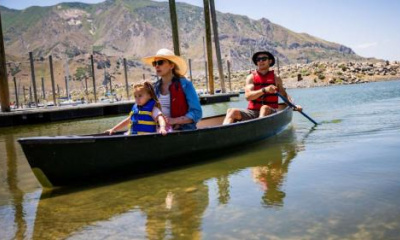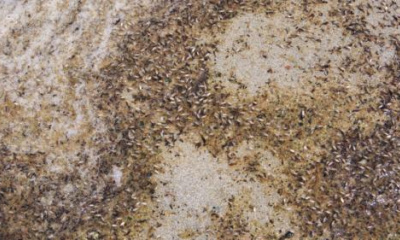BOX ELDER COUNTY, Utah — Out near the Spiral Jetty, where you can only hear the wind and your thoughts, lies a part of the Great Salt Lake many visitors are surprised to see.
"When we rolled up, I was like, 'Oh my gosh, the water's pink,'" said Shaelyn Summer, who was visiting the Spiral Jetty with her kids from Florida.
Others like Stephanie Keslerbayles who live in Utah were also surprised to see the water's appearance.
"I've heard of pink lakes in Africa and other continents, but not here, not in Utah," Keslerbayles said.
If you go out to the Spiral Jetty, you can see the pink water from ground level, but it looks even more pink from above.
"You can get various levels of pink depending if you're up on a hill looking down at the lake or on the shore," said David Parrott, the assistant director of the Great Salt Lake Institute.
The pink appearance of the North Arm of the Great Salt Lake looks quite different from the typical blue-green water seen near the Marina. Parrott says this difference started when the lake was separated by a causeway in the late 1950s.
"It sort of chopped the lake into two parts. Chopping it into two parts meant water was flowing in from the Bear River and Jordan River in the south but not into the north," Parrott said.
Parrott says a lack of fresh water caused the North Arm's salinity to rise to about 30% — about double the salinity of the South Arm which varies between 7-15% salinity. The North Arm's salinity is much saltier than normal life can stand, but beneath the surface are organisms that can survive in this extremely salty environment and give the North Arm its pink appearance.
"These archaea use pink or purple protein that capture light and turn that into energy. One of the two main reasons that the lake is pink is because of all these archaea," Parrott said.
Many visit the North Arm to take pictures or even a dip in the uniquely colored water, but even with all its beauty, Parrott says it's still a cautionary tale.
"The North Arm is sort of the worst-case scenario of what would happen in the South Arm. There are no brine shrimp, there are no brine flies, there are no green algae, and all of the macrobialites in the North Arm are dead," Parrott said. "The problem is the South Arm won't turn into the North Arm — it'll just dry up. And when it dries up, really the most immediate impact all of us in Utah will feel is the dust."
There is still hope that we can continue to enjoy all the quirks of the Great Salt Lake, like the pink North Arm, for generations to come.
"The State of Utah is really doing a great job so far in addressing this problem and coming up with real-world solutions that will help us mitigate this," Parrott said. "It's not a pack up and move it's all over. We can still fix this. It may not be perfect, but it will be livable for us."









